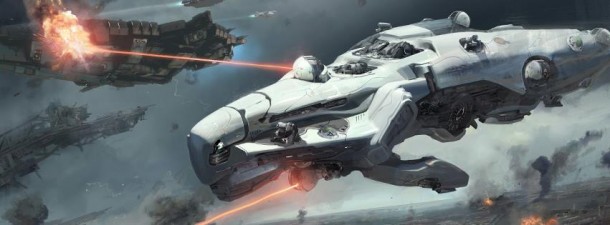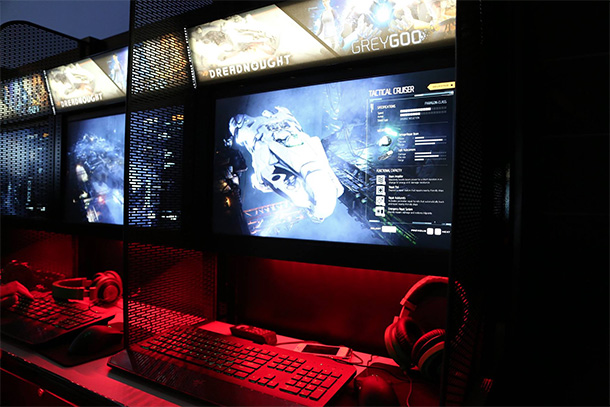
Hey, here’s a great idea:
All of your favorite space ships, loaded to the hilts with weapons, thrown into battle to blow each other up. Add in great visuals, screeching sounds, and the ability to fight in space or hovering around the mountains of a planet.
Bingo. Take my money. I can’t throw it at the screen hard enough.
If that sounds like a fantasy, then that’s what developer Yager are going for with their latest project Dreadnought. The company wants to give us access to our favorite ships of all time, or representations of them (thanks, licensing!) to play with. Who wouldn’t want to pilot the Millennium Falcon and take on the USS Enterprise (or some variation of)?
Ah, but then we start mapping physics onto these ships, and reality sets in. Space ships move slow. At least, these did during our demo. You see, I had the idea going in that Dreadnought would be all about dogfights and giant explosions and flying bullets and lasers and near misses. The game is much more tactical than that, and relies far more on teamwork than I had anticipated. That’s not a bad thing, and actually a bit refreshing, but it did throw me off.
Dreadnought is intentionally designed this way to make sure that one ship or another doesn’t break the physical boundaries of what the rest are playing in. It’s kind of like skimming away some of the cream off of a latte to make sure that it doesn’t seep into coffee below and change the flavor too drastically. Once we get over that, though, and stop playing the game like an all-guns blazing intergalactic hero, the surprising depth of the experience begins to show through.

Designed around the principles of ship management and war strategy, Dreadnought reminds me of naval warfare. During our team deathmatch demo on PCs we could select one of 5 classes to pilot, though 12 are planned for launch with customization options. Ranging in size from small and zippy to massive and powerful, I chose the Destroyer, the most “average” ship to learn the ropes. Apart from attacking, ships can also defend and “heal” depending on their class, and teleport around the battlefield. The medium-sized ship allowed me to experience the war and yet still maneuver around, something that the star cruisers would undoubtedly have trouble with in the mountainous planet surface we were playing on.
The game isn’t about twitch or reaction movements. My Destroyer had a large turning radius, requiring me to position myself correctly before I could fire on enemies. I had to gather momentum and plan my movements ahead of time, relying on strategy and knowing where I was going before I moved. Also central to the gameplay is the power wheel, which allows for adjustment and allocation of resources. Were my shields low? I would push power to them but weaken something else. If I was getting attacked my teammates could support and heal me. This allowed me to keep a steady cyclical flow of the goings-on of my ship. Once I did, though, I could line up and fire for what seemed like an uninterrupted eternity until my opponents exploded.
I felt like a ship captain, not like Han Solo. Like I was a part of a larger war effort, not a dogfight. I had my place in the battle, no matter what the size of my ship was. And that is what Dreadnought is designed to be: not the space ship simulator, but the space ship commander simulator.
Dreadnought is due to hit our space in 2015.
Disclosure: One of the PR folks handling Dreadnought has appeared on Lonely TARDIS, which used to be hosted on SideQuesting

![E3 2014: Starting a war amongst the stars with Dreadnought [Hands-on]](https://www.sidequesting.com/wp-content/uploads/dreadnought-1.jpg)

No Comments